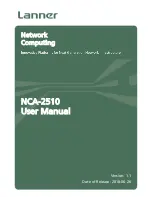
39-12
Cisco Catalyst Blade Switch 3120 for HP Software Configuration Guide
OL-12247-01
Chapter 39 Configuring IPv6 Unicast Routing
Configuring IPv6
•
Dual IPv4 and IPv6 VLAN template—supports basic Layer 2, multicast, QoS, and ACLs for IPv4,
and basic Layer 2 and ACLs for IPv6 on the switch.
Note
An IPv4 route requires only one hardware entry. Because of the hardware compression scheme used for
IPv6, an IPv6 route can take more than one hardware entry, reducing the number of entries forwarded in
hardware. For example, for IPv6 directly connected IP addresses, the desktop template might allow less
than two thousand entries.
Table 39-4
defines the approximate feature resources allocated by each new template. Template
estimations are based on a switch with eight routed interfaces and approximately one thousand VLANs.
Configuring IPv6
These sections contain this IPv6 forwarding configuration information:
•
Default IPv6 Configuration, page 39-13
•
Configuring IPv6 Addressing and Enabling IPv6 Routing, page 39-13
•
Configuring IPv4 and IPv6 Protocol Stacks, page 39-15
•
Configuring IPv6 ICMP Rate Limiting, page 39-17
•
Configuring CEF and dCEF for IPv6, page 39-17
•
Configuring Static Routing for IPv6, page 39-18
•
Configuring RIP for IPv6, page 39-20
•
Configuring OSPF for IPv6, page 39-22
Table 39-4
Approximate Feature Resources Allowed by Dual IPv4-IPv6 Templates
Resource
IPv4-and-IPv6
Default
IPv4-and-IPv6
Routing
IPv4-and-IPv6
VLAN
Unicast MAC addresses
2 K
1.5 K
8 K
IPv4 IGMP groups and multicast routes
1 K
1 K
1 K for IGMP
groups
0 for multicast
routes
Total IPv4 unicast routes:
3 K
2.75 K
0
•
Directly connected IPv4 hosts
2 K
1.5 K
0
•
Indirect IPv4 routes
1 K
1.25 K
0
IPv6 multicast groups
1 K
1 K
1 K
Directly connected IPv6 addresses
2 K
1.5 K
0
Indirect IPv6 unicast routes
1 K
1.25 K
0
IPv4 policy-based routing ACEs
0
0.25 K
0
IPv4 or MAC QoS ACEs (total)
0.5 K
0.5 K
0.5 K
IPv4 or MAC security ACEs (total)
1 K
0.5 K
1 K
IPv6 security ACEs
1 K
1 K
1 K






































